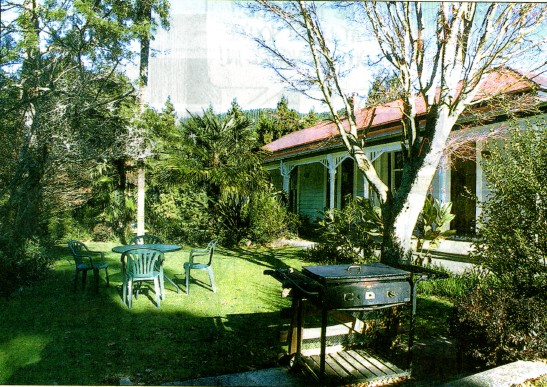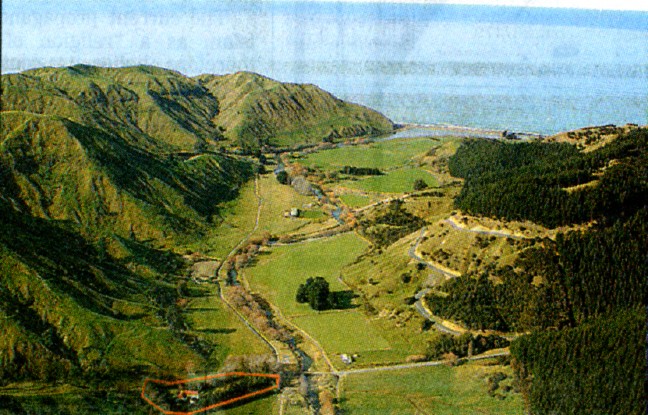The lore of the land
An elegant colonial
homestead near Napier sits in an idyllic valley that is
steeped in tales of yore - and gore.
AROPAOANUI IS a graceful and historic homestead in an idyllic coastal setting about 40km north of Napier.
Set in a secluded valley where the Aropoanui River meets the sea, the old farmhouse is about 1km up the valley from the beach.
Although the river, its quiet estuary and the sandy beach all offer abundant recreational opportunities, the spot is almost completely undeveloped.
The only other dwellings in the valley are about half a dozen farm houses and the beach usually attracts only a handful of day trippers, even in the summer months
The valley was once part of a single 1200ha sheep station, which has since been subdivided, and the old homestead comes with just 0.93ha of land, making it an ideal retreat for anyone who wants a country lifestyle without the hassle of running a farm.
The area is rich in pre-European and colonial history, and a Maori pa once stood at the mouth of the river, just over 1km from the homestead.
Local lore has it that Aropaoanui means Big Smoke, a name derived from an incident after a Maori battle in which a number of bodies from the losing side were put into a large fire.
However Wises New Zealand Guide gives a more detailed and gruesome account (squeamish readers may like to skip the next paragraph).
Wises gives the literal translation as: aro - the fat covering the kidneys; paoa - to bash; nui - thoroughly, the name referring to a cannibal feast at the pa. According to Wises, "when the earth ovens were opened up, the bodies being cooked appeared to move as though the victims were still alive. One of the local chiefs realised the movement was caused by the twitching of the fat over the kidneys and bashed the moving flesh into stillness".
In colonial times, the area was developed by John McKinnon, a Scottish setter who bought 3000 acres in 1862 and proceeded to slash and burn the lush native bush which originally covered the surrounding hills and replaced it with pasture. The original home, which McKinnon built from timber milled on the site, was burned down around the turn of the century, and its replacement, the current homestead, was built in 1901.
The house covers 380 square metres and has six bedrooms, two bathrooms, three living areas and large verandahs running across the front and along one side. Although extensively renovated, it retains all of its colonial charms which are readily apparent the moment you enter the large central hallway with its extensive native timber panelling.
The wood panelling and battened timber ceilings continue throughout the house, providing a mellow, traditional ambience.
Like many old homesteads, much of the life of Aropaoanui revolved around the huge farmhouse kitchen and walk-in pantry, which also served as a family dining room.
Off the kitchen and providing access to the back door is the original boot room, a common feature of old farmhouses where people would remove and hang their mud-spattered outer garments and boots before entering the living areas. This is as large as the kitchen and is mainly used for storage.
For relaxing on quiet evenings, there is a cosy parlour - a small living room with its own gas fire. There is a large formal lounge and dining room, which open to the spacious verandahs overlooking the park-like grounds.
The house is surrounded by expansive lawns, bordered by flower beds and a large number of mature trees, both native and exotic.

The property is at the back of the valley leading to the beach with a stream running at its border, and although it does not have sea views, the sandy beach is just over a kilometre away. With bush-covered hills at its back and the lush valley leading to the sea at the front, this house offers the best of country and coastal living. It is being sold by tender.
